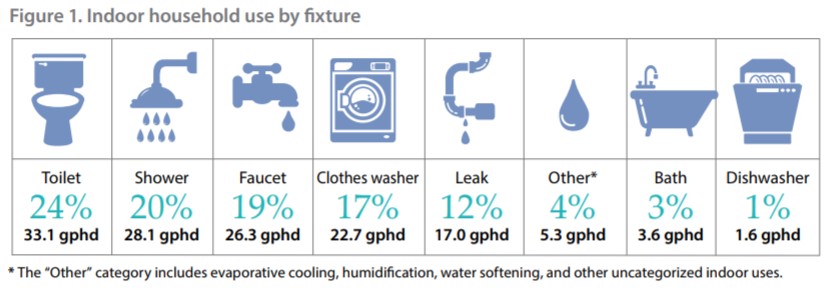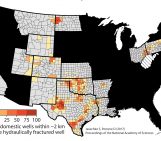
Post by Samuel Zipper, postdoctoral fellow at both McGill University and the University of Victoria, in Canada. You can follow Sam on Twitter at @ZipperSam.
___________________________________________________________
How can society best cope with water scarcity?
With Cape Town on the verge of being the first major city to run out of water (a topic for a future post here on Water Underground), this is a question on the minds of many water managers and scientists within the emerging fields of socio-hydrology and socio-hydrogeology.

Low levels in Cape Town, South Africa’s reservoir system. Image source: University of Cape Town News.
Recently, my wife & I had the opportunity to see a more musical exploration of this question at the Langham Court Theatre’s production of Urinetown here in Victoria. This satirical musical envisions a future in which severe droughts have limited water supplies to the point that government (controlled by a corporation) decides the best way to conserve water is to charge people to use the restroom, thus limiting both direct and indirect human consumption (by people drinking less and flushing the toilet less, respectively).
As a scientist, I naturally found myself wondering: how effective would this tactic be?

Urinetown poster. Source: http://www.langhamtheatre.ca/boxoffice/plays/urinetown/
Fortunately, the data exist to give us at least a rough approximation. Globally, only about 10% of water is used in households; the vast majority (about 70%) goes to agriculture. Once the water reaches your household, however, Urinetown may have a point; in an average US household, toilets are the largest water user, averaging ~1/4 of domestic water use (33 gallons per household per day). Since the US has among the largest per-capita water use of any country, we can use this number as an upper bound for a back-of-envelope calculations: globally, if we collectively stopped flushing toilets today, we’d reduce water use by a maximum of 2.5%.
In contrast, switching to diets with less animal protein (particularly beef) can have a far greater impact, saving well over 10% – it takes 660 gallons of water to make a burger, equivalent to about 180 flushes of a standard toilet (see the water footprint of various foods here). However, water is inherently a local issue – most of the water that goes into your burger was used to grow crops, potentially far away from wherever you live, and does not consume local water resources. Also, the numbers we used for the above calculations have a lot of local variability, with up to ~1/3 of total water use in Europe and Central Asia in the household.

Percentage of indoor water use by different fixtures. Source: Water Research Foundation.
So overall, does the math add up for Urinetown? At a global scale, reducing agricultural water use through improvement in irrigation practices and changes in diet is going to have a much bigger impact. Locally, however, toilets do use a lot of water and restricting their use during times of crisis is a smart approach – and Cape Town has had an “If it’s yellow, let it mellow” recommendation since September. Replacing your toilet with a high-efficiency fixture can help as well – many cities and states have rebate programs to help reduce the costs of this switch.
And how does it turn out for the residents of Urinetown? To answer that question, you’ll have to see the show yourself. Urinetown had a three year run on Broadway, including winning three Tony Awards, and is now a popular choice for theatres all around the world.
___________________________________________________________

Sam Zipper is an ecohydrologist. His main research focuses broadly on interactions between vegetation and the water cycle, with a particular interest in unintended or indirect impacts of land use change on ecosystems resulting from altered surface and subsurface hydrological flowpaths. You can find out more about Sam by going to his webpage at: samzipper.weebly.com.




